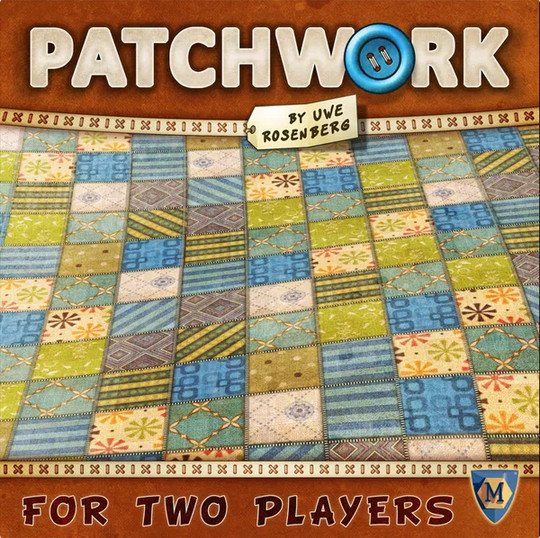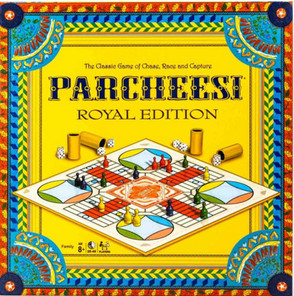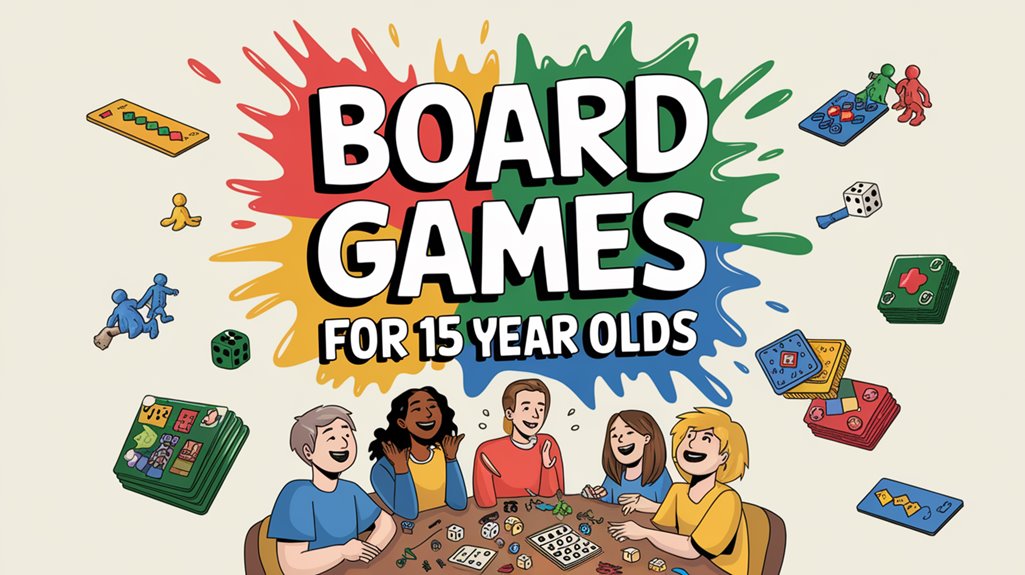Board games for children aged 8-10 blend entertainment with educational development. These games feature appropriate complexity levels that support cognitive growth while remaining accessible. Strategic titles enhance critical thinking, cooperative games build social skills, and logic-based challenges develop problem-solving abilities within structured rules. Effective designs balance accessibility with sufficient depth to maintain engagement.
Key Takeaways
- Strategic games like Kingdomino Origins and My Little Scythe build critical thinking skills while remaining age-appropriate.
- Cooperative games including Marvel United and Unlock! Kids teach teamwork and problem-solving through shared objectives.
- Quick logic puzzlers offer 15-30 minute cognitive challenges with tiered difficulty for developing minds.
- Classic games such as Monopoly and Game of Life introduce economic concepts and decision-making.
- Card drafting games like Sushi Go develop tactical thinking in approachable 20-minute sessions for 2-7 players.
Strategic Family Favorites
Strategic board games designed for 8-10 year olds incorporate developmental mechanics that encourage critical thinking while maintaining age-appropriate engagement. These family games balance complexity with accessibility, creating ideal learning environments that promote decision-making skills.
- Kingdomino Origins and My Little Scythe represent premier strategic game options, offering scalable difficulty levels and complex mechanics wrapped in child-friendly themes.
- Patchwork and Adventure Land stand among the best board games for spatial reasoning development, featuring multiple play approaches that sustain engagement while building problem-solving capabilities.
- Ticket to Ride delivers enduring strategic value through route planning challenges, providing transferable planning skills within an accessible framework suitable for family game nights.
Each title balances competitive elements with educational value, making them valuable additions to household collections seeking both entertainment and cognitive development.
Cooperative Teamwork Adventures
Cooperative board games designed for the 8-10 age bracket establish fundamentally different play mechanics than their competitive counterparts, emphasizing collective achievement over individual victory. These strategy games cultivate crucial developmental skills through collaborative problem-solving frameworks.
| Game Title | Core Mechanic | Key Skill Development |
|---|---|---|
| Marvel United | Synchronized hero actions | Strategic resource allocation |
| Unlock! Kids | Escape room puzzles | Deductive reasoning |
| 5 Minute Marvel | Real-time threat response | Rapid decision-making |
The best games in this category, such as Chronicles of Avel, implement exploration systems requiring coordinated player actions to overcome progressive challenges. This cooperative teamwork model develops communication protocols between participants while simultaneously encouraging critical thinking abilities. Unlike traditional competitive formats, these games create shared responsibility structures where success hinges upon effective group strategizing rather than individual performance.
Quick Logic Puzzlers
While cooperative games build team dynamics through extended play sessions, quick logic puzzlers occupy a distinct cognitive niche in the 8-10 year old board game spectrum. These condensed intellectual challenges, typically completable within 15-30 minutes, function as cognitive development accelerators through systematic engagement with pattern recognition and spatial reasoning.
Games like Logic Links and Twizzle Twisting Tile Logic Puzzles implement tiered difficulty structures, allowing players to progress through increasingly complex reasoning challenges as their critical thinking abilities advance. This scaffolded approach maintains peak engagement while systematically building problem-solving capabilities.
Beyond individual cognitive benefits, many quick logic puzzlers incorporate cooperative play elements through team-based challenges or timed competitions. This dual-purpose design simultaneously develops logical reasoning while promoting social interaction—establishing these games as efficient tools for both intellectual development and interpersonal skill improvement.
Classic Roll-and-Move Games
In spite of their foundational status in board game taxonomy, classic roll-and-move games maintain significant developmental value for the 8-10 year demographic through their implementation of core mechanical principles. These games promote numerical cognition via dice-based progression systems while simultaneously reinforcing social protocols through structured turn sequencing.
| Game Title | Primary Mechanic | Strategic Element | Player Count |
|---|---|---|---|
| Monopoly | Asset Acquisition | Resource Management | 2-8 Players |
| Sorry! | Token Displacement | Tactical Positioning | 2-4 Players |
| Game of Life | Narrative Progression | Decision Branching | 2-6 Players |
| Parcheesi | Race Mechanics | Blockade Formation | 2-4 Players |
The versatility in participant accommodation renders these games ideal for family engagement scenarios. While mechanically straightforward, these titles effectively balance accessibility with decision-making opportunities, allowing children to develop strategic cognition within comprehensible rule frameworks.
Card Drafting Champions
Card drafting mechanisms represent a strategic advancement in gameplay sophistication appropriate for the 8-10 year cohort, emphasizing decision matrices that balance immediate tactical advantage against long-term positional development. Titles like “Sushi Go” introduce fundamental selection heuristics while maintaining approachable 20-minute play sessions suitable for younger attention thresholds.
This card game category excels in multi-variant player scaling (2-7 participants), facilitating social cognition development as kids practice anticipating opponents’ selection patterns. Though primarily competitive, drafting mechanics fundamentally create tactical interdependence, with players indirectly working together to shape the available card pool.
“7 Wonders” raises complexity through resource allocation substructures and civilization-building objectives, promoting advanced decision trees while maintaining the core drafting framework—forcing continuous evaluation between self-advancement and denial strategies against opponents.
Auction Bidding Battles
Auction mechanics represent a sophisticated progression in economic literacy development for the 8-10 demographic, introducing finite resource allocation principles through competitive bidding frameworks. These auction games challenge participants to evaluate opportunity costs while deploying various bidding strategies—both open and concealed.
Popular implementations like “High Society” and “Power Grid” cultivate strategic decision-making abilities through resource management constraints. Players must analyze wealth distribution strategies while adapting to opponents’ tactics, often incorporating calculated bluffing elements to secure prime acquisitions.
Accommodating 3-6 participants, these systems create perfect family game nights that organically develop negotiation and communication competencies. The varied bidding structures (silent bids versus open-outcry formats) guarantee gameplay remains unpredictable across multiple sessions, thereby maintaining engagement while reinforcing economic concepts through practical application rather than abstract instruction.
Tile-Laying Strategy Games
Tile-laying strategy games represent a significant advancement in spatial reasoning development for the 8-10 age bracket, moving beyond the economic abstractions of auction mechanics toward tangible territory manipulation and pattern recognition. Exemplars like “Kingdomino” and “Carcassonne” introduce complex decision trees where players must work together to navigate shared spatial constraints while pursuing independent objectives.
These board games for kids necessitate critical evaluation of tile placement opportunities, encouraging forward planning within 30-45 minute timeframes—ideal for both brief sessions and extended play. Mechanically, they demand participants analyze territory control variables, adjacency bonuses, and feature completion parameters. The cognitive architecture required for success encompasses both tactical immediacy and strategic foresight, making tile-laying strategy games particularly valuable for developing minds that crave autonomy within structured rule systems.
Maze Solving Competitions
Numerous puzzle-based board games have emerged as cognitive development powerhouses for the 8-10 demographic, offering structured competition frameworks that quantifiably improve spatial navigation aptitude. “The Magic Maze” stands as the exemplary example, implementing hidden barrier mechanics that necessitate memory retention alongside pathfinding heuristics—a dual-process cognitive demand particularly suited to developing prefrontal cortex functions.
Timed maze solving competitions introduce urgency constraints, requiring participants to optimize solution algorithms while maintaining navigational precision. Children develop advanced problem-solving capabilities through incremental difficulty calibration systems. Cooperative maze-solving games transcend individual limitations by necessitating distributed cognition among multiple participants, encouraging collective intelligence acquisition. This format allows for multi-variable skill development: spatial awareness, strategic planning, and interpersonal coordination. Each iteration reinforces neural pathways associated with executive functioning while maintaining engagement through achievement-based reward mechanisms.




